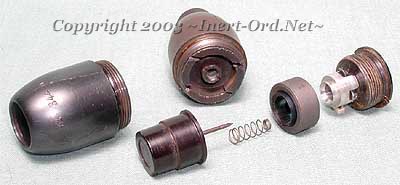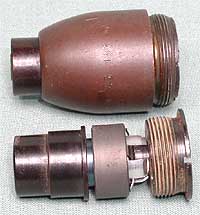
The HE Rifle Grenade came first, diameter limited to 30mm, matching the caliber of the Schiessbechere. It has a steel fuze and body with a pre-rifled Bakelite driving band base.
It used the AZ5071 PD fuze with an internal set-back safety.
The intent here was to create a more accurate weapon than the spigot launched GG/P 40.
There are at least 5 versions of the Mod.30, including:
o Combination Rifle and Hand grenade, with / without a self destruct feature. (Shown at right)
o Rifle Only, no self destruct with removable bakelite driving band.
o Rifle Only, no self destruct, fixed driving band.
o Rifle Only, with fuze and base made of aluminum for more range (Weitschuss).






